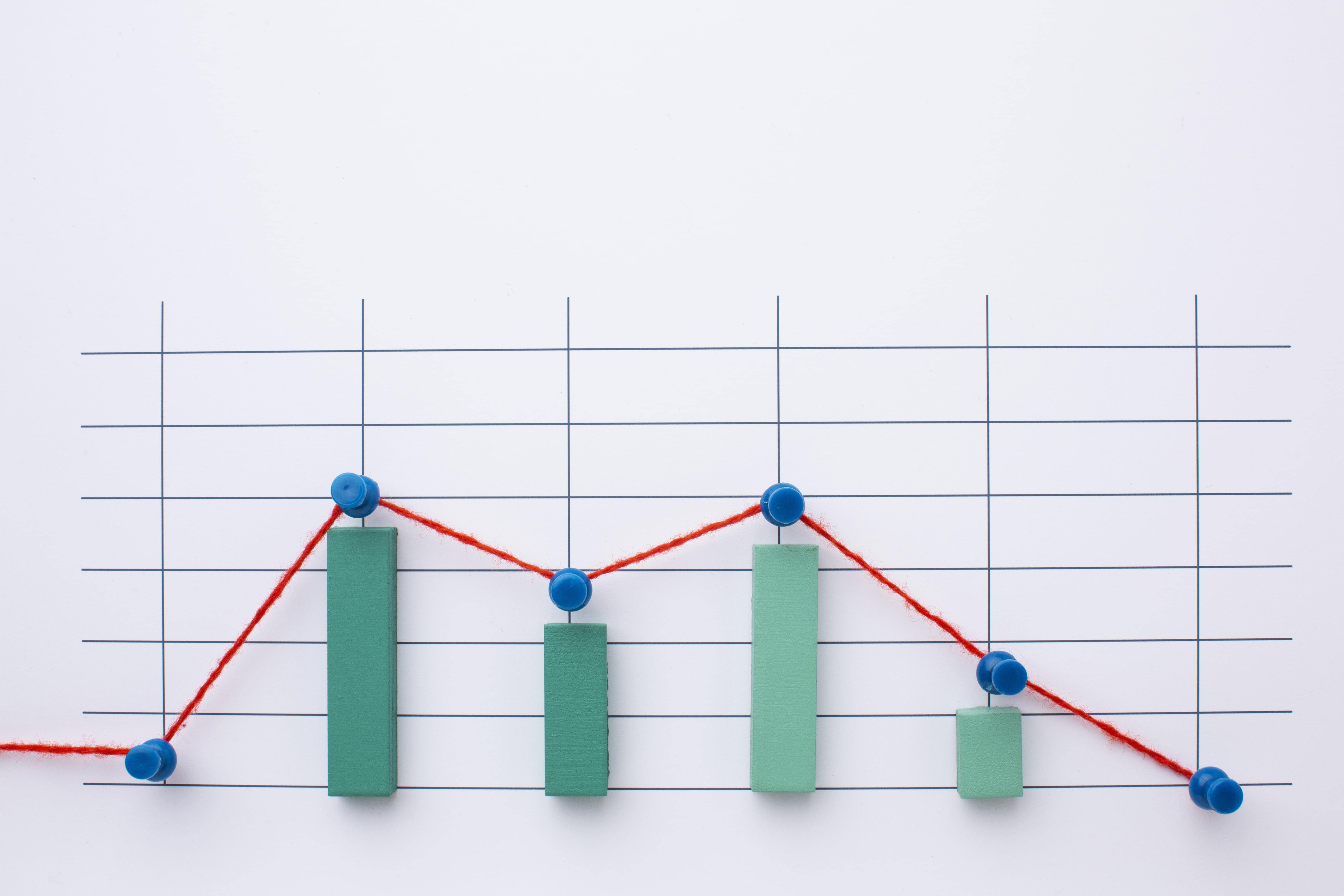Marketing is now more data-driven than ever before because of the digital era. In particular, performance marketing significantly relies on metrics analysis to assess the success of marketing efforts and make data-driven decisions. Understanding and monitoring important metrics is crucial to success in digital marketing, including pay-per-click (PPC), email marketing, social media advertising, and others.
In this blog post, we’ll examine the crucial performance marketing indicators that every marketer has to be aware of.
Click-Through Rate (CTR)

One of the core measures in performance marketing is the click-through rate (CTR). It counts the proportion of people who see your content or advertisement before clicking on it. The CTR is computed by multiplying the result by 100 and dividing the number of clicks by the number of impressions (the number of times your ad or content is displayed).
A high CTR shows that your advertisement or content is interesting and pertinent to your target market, which can increase website traffic and result in conversions.
Note: However, a high CTR does not always mean a high return on investment (ROI). Sometimes, a low CTR can indicate that your advertisement or content is reaching a more qualified audience who are more likely to take action. Therefore, it is important to consider other metrics such as cost per click (CPC), conversion rate (CR), and cost per acquisition (CPA) to evaluate the effectiveness of your performance marketing campaign.
Conversion Rate

Possibly the most crucial performance marketing statistic is conversion rate. It gauges the proportion of consumers who visit your website or click on your advertisement before performing the required action. Depending on your campaign objectives, such as getting a customer to buy something, sign up for a newsletter, or fill out a contact form, conversions can differ.
A high conversion rate shows that your marketing initiatives are successfully persuading users to carry out the intended activity, which eventually produces a return on investment (ROI).
The conversion rate is a sign of both immediate success as well as the overall success of your marketing plan in terms of user experience, audience targeting, and messaging. Marketers may pinpoint customer journey bottlenecks and make data-driven improvements to optimize the entire conversion funnel by carefully studying conversion rate data.
Cost-Per-Click (CPC)

The cost per click (CPC) metric calculates the amount you fork over each time a user clicks on your advertisement. CPC can change depending on variables including platform, industry, and keyword competitiveness. To make sure that you are efficiently managing your budget, CPC monitoring is crucial.
Your marketing efforts can become more cost-effective if you lower your CPC while keeping or raising CTR.
A reduced CPC can draw more targeted and engaged visitors who are more likely to become customers when combined with an effective ad and landing page. This strategy not only makes the most of your advertising dollars but also guarantees that you are targeting the users who
Return On Investment (ROI)are most likely to perform the desired action, therefore increasing your return on investment and campaign effectiveness.
The most important statistic for evaluating the success of your performance marketing initiatives is ROI. By comparing the revenue from your marketing operations to the cost of those activities, it assesses the profitability of your campaigns.
A good ROI shows that your marketing activities are producing more income than they cost, whereas a negative ROI shows that you are incurring greater expenses than revenues. Performance marketing’s main objective is to optimize your campaigns for a profitable return on investment.
Customer Acquisition Cost (CAC)

Another crucial measure that may be used to determine how much it costs to gain new customers is the customer acquisition cost (CAC). It accounts for all marketing and sales costs related to obtaining a customer, such as advertising fees, employee wages, and other overhead costs.
A reduced CAC can indicate that your marketing techniques are becoming more effective and efficient at luring high-value clients who are more inclined to stick around, make repeat purchases, and become brand ambassadors, in addition to cost reduction.
Along with ensuring a healthy bottom line, you can encourage client loyalty, which can result in sustainable growth and a competitive edge in the market, by consistently improving your customer acquisition strategies and concentrating on obtaining and keeping high-quality consumers.
In essence, minimizing CAC is about creating a solid basis for long-term success in performance marketing, not only about making quick cost savings.
Return on Ad Spend (ROAS)

A statistic known as return on ad spend (ROAS) focuses particularly on the revenue produced from advertising costs. It gauges your return on investment for each dollar spent on advertising.
A ROAS of 1 implies a break-even campaign, whereas a ROAS of greater than 1 suggests a successful one. For instance, a ROAS of 5 indicates that for every $1 spent on advertising, you make $5 in revenue.
You are effectively allocating your cash to the channels and campaigns that generate the most return as you strive to continually surpass the break-even mark and raise your ROAS.
This not only confirms that your marketing investments are paying off, but it also gives you the information you need to scale successful campaigns, improve your targeting, and continually improve your advertising strategy for maximum effect and long-term success.
Bounce Rate
The percentage of users who leave your website after only reading one page, without taking any further action, is measured by the website-specific metric known as bounce rate. A high bounce rate may be a sign that the information on your landing page or website is neither compelling or pertinent to the visitor.
To retain visitors on your website longer and boost conversion rates, you must reduce bounce rates.
Customer Lifetime Value (CLV)

The Customer Lifetime Value (CLV) statistic calculates the total revenue that a customer is anticipated to bring in during the course of their relationship with the company. It aids in your comprehension of the long-term benefits of attracting and keeping clients.
You can defend greater client acquisition expenditures and allocate funds to existing customer retention initiatives by raising CLV.
By raising CLV, you can both justify spending more on client acquisition and establish a reliable income stream that lessens the need for ongoing customer acquisition in order to maintain growth. By focusing on the needs of the consumer, your performance marketing initiatives will be in line with a long-term, lucrative, and sustainable business vision.
Click-Through Conversion Rate (CTCR)

The percentage of users who convert after clicking on an advertisement is measured by the click-through conversion rate (CTCR). This statistic is very useful for determining how well-targeted advertising campaigns or ad groups perform. You may determine which advertisements or keywords are generating the most conversions by measuring CTCR, and you can then modify your campaigns accordingly.
This iterative optimization process, which is based on CTCR insights, is essential for improving your marketing strategy and continually getting improved outcomes from performance marketing initiatives
Ad Quality Score
The quality and relevancy of your adverts are evaluated using the Ad Quality Score, a metric utilized in platforms like Google Ads. A reduced CPC and better ad placement are often outcomes of a higher Quality Score.
Ad relevancy, anticipated click-through rate, and landing page experience are all elements that have an impact on the Ad Quality Score. Ad Quality Score monitoring and improvement might result in more economical advertising.
In addition to drawing in more clicks, a well-optimized ad with a high Quality Score makes sure that users who interact with your ad find it valuable and relevant. This results in a better customer experience, which could boost consumer loyalty and brand trust.
Email Open Rate
The email open rate is a critical indicator for email marketing initiatives. It gauges the proportion of receivers who really read your email. A greater open rate indicates that the email’s content and subject lines are interesting and persuasive.
You can experiment with subject lines, send times, and personalization to increase email open rates.
Email Click-Through Rate (CTR)
The percentage of receivers who click on links or calls to action within your email is measured by the email click-through rate (CTR). A high email CTR shows that the content of your email is successful in increasing user interaction.
You can increase email CTR and traffic to your website or landing pages by optimizing the email’s content and calls-to-action
Coming to a Close

Performance marketing uses a range of important criteria to evaluate the success of marketing efforts and effectively allocate resources. Understanding and tracking these indicators is crucial to success whether you’re concentrating on digital advertising, email marketing, or other online marketing techniques. You may increase your ROI and foster long-term business growth in the digital age by regularly monitoring and optimizing your campaigns based on these indicators.

